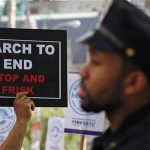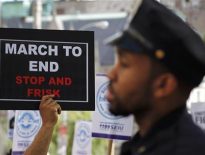(Reuters) – Forty-eight hours into the bloody assault on Mumbai in November 2008, smoke was billowing from the wreckage of the Taj Mahal hotel and commandos were flushing out the last gunmen holed up in the opulent landmark of India’s financial capital.

A short distance away in the city’s southernmost peninsula, security forces were still battling at Nariman House, a Jewish centre where two of the Islamist militants had taken half a dozen people hostage, including a rabbi and his pregnant wife.
“Remember that every one person you kill there is like taking 50 lives,” a coordinator of the rampage told the two men, according to the transcript of a telephone conversation picked up by Indian intelligence. “Get rid of these people. Kill them.”
All six in the centre were killed before the gunmen were slain by security forces. In all, 166 people were killed in the three-day frenzy of attacks on two upmarket hotels, Mumbai’s busy railway terminal and a fashionable cafe.
India says the voice urging the 10 militants on to bloodshed was that of Indian-born Sayed Zabiuddin Ansari, who was speaking from a “control room” in the Pakistani city of Karachi.
Last month, after more than a year of painstaking diplomacy that involved India, Saudi Arabia and the United States, Ansari was quietly put on a plane in Riyadh, flown to New Delhi and arrested.
For India it is a huge breakthrough. New Delhi is hoping that Ansari’s capture will help prove its allegation – strenuously denied in Islamabad – that the Mumbai carnage was directed by people connected with Pakistan’s security establishment, particularly the shadowy ISI military intelligence agency.
That could stir fresh tensions between South Asia’s nuclear-armed rivals, who have already fought three wars since their independence 65 years ago, and it could put further strain on the ragged relations between the United States and Pakistan.
Ansari’s extradition from Riyadh – which officials say came after pressure from Washington and despite pleas from Islamabad for him not to be sent to India – may also have delivered a jolt to Pakistan’s traditionally close relations with Saudi Arabia.
“A WINDOW INTO THE CONTROL ROOM”
Indian investigators say Ansari, who is also known as Abu Jundal and Abu Hamza, has confessed he was in the “control room” talking the gunmen through their operation by satellite phone.
They believe that, alongside him there, was Hafiz Saeed, founder of the Lashkar-e-Taiba (LeT) militant group whose emergence the ISI nurtured in the 1990s as a proxy to fight Indian forces in the disputed Himalayan territory of Kashmir. Earlier this year the United States placed a $10 million bounty on Saeed’s head, but he still moves freely around Pakistan.
Ansari’s arrest may turn out to be far more critical to shedding light on the command and control of the 2008 attacks than Mohammad Ajmal Kasab, the only gunman to be taken alive and who is now on death row in a Mumbai prison.
“It is a window into the control room, who set it up, who was coming into it, who was going out,” said Ajit Doval, a former head of the Intelligence Bureau, India’s domestic spy agency, which has been questioning its prize catch at an undisclosed location.
“It takes us one step closer to the role of Pakistani establishment in the attacks. That will be the big worry in Islamabad,” said Doval.
Indian officials caution that they are unlikely to find a smoking gun leading directly to the headquarters of Pakistan’s powerful military, but they say Ansari’s arrest nonetheless provides crucial details suggesting some level of complicity.
A Pakistani security official told Reuters there was quite simply no ISI involvement, and there wasn’t even a control room.
A QUIET AND SHY BOY
Ansari carried a Pakistani passport – a fake, the Pakistani security official said. He was born 30 years ago in India, and brought up in a village near the dusty town of Beed, some 350 km (220 miles) east of Mumbai.
When he was about 15, his family moved to a Muslim-dominated neighborhood in Beed town, a crowded and down-at-heel area with narrow lanes, dug-up roads, open drains, a vegetable market and two mosques.
Locals say that Ansari was a timid and quiet boy, coming off worst when there were street brawls and barely making a mark at school. “None of the teachers remember teaching him,” said Bharat Sonavane, principal at Beed’s Balbhim College for Art, Science and Commerce, where Ansari was a student.
Trained as an electrician, he found work that brought money for a family struggling to make ends meet, including one job re-wiring the local police headquarters.
Ansari suddenly disappeared in 2006 after police linked him to an arms haul case. For the next six years his family received no word of him, until last month when his bearded face was splashed on news networks announcing his deportation and arrest.
“We thought he might be dead by now,” said Ansari’s mother, Rehana, a 65-year-old diabetes sufferer who spoke to Reuters from her father’s tiny home in Beed.
“One night he just left home and we didn’t hear from him for almost six years. No phone call, no letter,” she said, holding back tears in pale green eyes framed by a black burqa, the all-enveloping garment worn by many Muslim women on the subcontinent. “It pains us … we never imagined our Zubi would be linked to this.”
ATTACKERS COACHED IN HINDI
Shortly after nightfall on November 26, 2008, three inflatable speedboats pulled up on the shores of Mumbai. The 10 men aboard had sailed across the Arabian Sea from Karachi for days, hijacking an Indian trawler on their way and killing its crew.
When they were accosted by local residents, the men were prepared. Ansari told his interrogators that he had coached the gunmen to speak Hindi with a local accent so that their assault could be passed off as a home-grown attack rather than traced back to Pakistan: at one point during the operation he scolded them for not using the proper dialect.
Indian officials who analyzed the phone conversations with the gunmen had long suspected that one of the handlers was an Indian because he used words only a fluent Hindi speaker would use, while the others spoke the mix of Punjabi and Urdu common to large parts of Pakistan.
Ansari, investigators say, has provided the names of four other people in the Karachi control room, which New Delhi maintains could not have operated without some state support.
Two of them he named as Sajid Mir, also known as Sajid Majid, and Sameer Ali.
A Pakistani-American, David Headley, who was convicted of scouting targets in Mumbai ahead of the attacks, gave the same two names to a Chicago court last year as helping mount the operation.
Headley identified Sameer Ali as a major in the ISI who had recruited him when he was briefly detained near the Pakistan-Afghan border in 2006 and Sajid Mir as a man handling foreign recruits for the LeT.
Mir was also believed to be the handler of a Frenchman accused of plotting an attack in Australia soon after the September 11 attacks. French judge Jean-Louis Brugiere who investigated the case said he believed Mir was an officer of the Pakistani military.
Ansari’s revelations could have a bearing on investigations in the United States, where families of six Americans who were killed in the Mumbai attack have filed lawsuits alleging that the head of the ISI at the time, Lieutenant General Ahmed Shuja Pasha, and other operatives helped the LeT plan and orchestrate its operation.
“We believe Ansari’s interrogation provides further corroboration of active ISI support in the attacks,” said an official of the Indian Intelligence Bureau. “They were physically present in the control room.”
EXTREMISTS IN INDIA’S BACKYARD
Pakistan, which has conducted its own investigation into the Mumbai assault and indicted seven members of the LeT – an organization it has officially banned – roundly rejects the charge that members of the ISI were involved.
“The Mumbai plot came to the attention of the ISI in 2005 or 2006,” the Pakistani security official said. “The leadership of the LeT was contacted and told not to go ahead with it. But the LeT waited. After Pasha took over as ISI chief, they managed to slip under the radar and carry it out.”
He said five handlers were scattered across Pakistan at the time, not together in a control room. Ansari himself was in the Sindh town of Thatta, speaking to the men in Mumbai from a Thuraya satellite phone.
The Pakistani prime minister’s adviser on interior affairs, Rehman Malik, said Ansari’s involvement showed that India had extremists in its own backyard who were being sent to Pakistan.
“I have the right to know how he was radicalized – was he radicalized through Muslim extremism or was he radicalized through Hindu extremism?” Malik told Reuters in an interview during a visit to London last weekend.
Indian investigators said that after leaving his hometown in 2006, Ansari crossed the porous border with Bangladesh and travelled by air to Pakistan. But it was not until some time in 2008 that they established his presence there.
The security official in Islamabad said Ansari first went to Pakistan during a brief conflict with India in the Kargil district of Kashmir in 1999, which broke out after Pakistani soldiers and militants poured across the de facto border between the two countries there.
“He thought he could just join the mujahideen on his own, but he didn’t manage,” the official said, describing Ansari as someone who “really believes Muslims are being suppressed around the world”.
SAUDI HELP
Early last year, Ansari obtained his fake Pakistani passport and flew to Saudi Arabia, where – the official in Islamabad said – the LeT thought he could blend in with the many Pakistani laborers there. Indian police believe he was “talent-spotting” in Saudi Arabia in preparation for another “massive attack”.
However, he was arrested there a few months later.
That was the starting point for a year-long effort by Indian intelligence to convince Riyadh that – despite the Pakistani passport – he was an Indian citizen and must be sent back.
“We kept telling them, don’t send him to Pakistan, he is our man and if he went there he would be lost to us. In July (last year) we told the U.S. to prevent him from going to Pakistan,” the Indian intelligence bureau officer said.
In May of this year, the United States put its foot down, telling Saudi Arabia there was overwhelming evidence that Ansari was an Indian national wanted for the attacks.
“The decision of the Saudi authorities to transfer Ansari to Indian custody, mindful of the unhappiness of Pakistan, will be seen in Pakistan as a blow to its much-vaunted relationship with Saudi Arabia,” said Bahukutumbi Raman, a former head of India’s external intelligence agency, the Research and Analysis Wing.
He said Riyadh’s move reflected a growing fear that the LeT may act as a Trojan horse on its soil for al Qaeda, which is now on the backfoot in Afghanistan and Pakistan.
“Why did the Saudis eventually agree to give him up? And that, too, to a non-Islamic country? We know they have given suspects to the U.S. but not to us,” said Doval, the former Indian Intelligence Bureau chief. “That’s a shift.”
(Additional reporting by Michael Georgy in ISLAMABAD, Kaustubh Kulkarni in BEED, India, Myra MacDonald and Avril Ormsby in LONDON and Tabassum Zakaria in WASHINGTON; Editing by Raju Gopalakrishnan)





